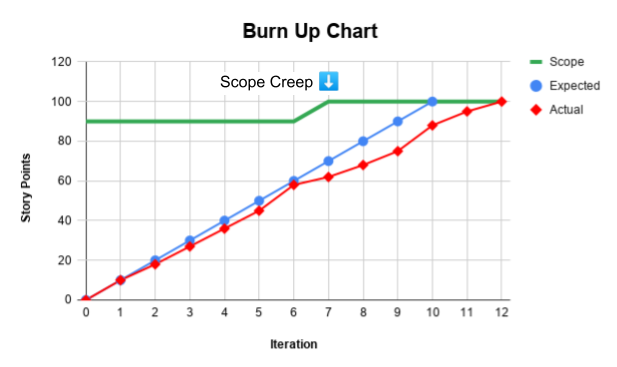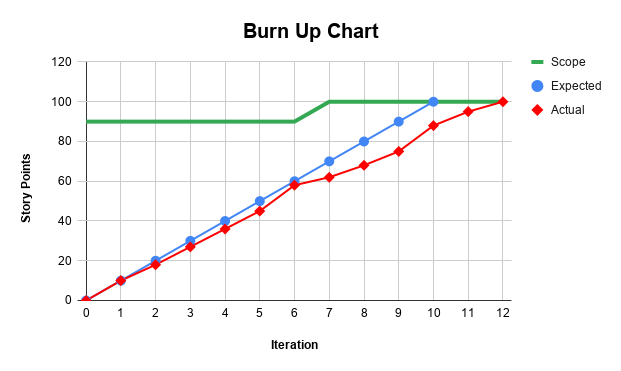Top 5 Agile Estimation Techniques
Estimating the time, effort, and cost required for a project is one of the most important and challenging aspects of software development. Agile estimation techniques provide a way to address this challenge, enabling teams to plan and execute projects more effectively .. hopefully making the effort less tedious and more engaging for developers. Here are my Top 5 Agile Estimation Techniques -
Dot Voting
Planning Poker
T-Shirt Sizes
Bucket System
Affinity Mapping
Wide-band Delphi (Bonus)
There are many other estimation techniques like Ordering Protocol, Uncertainty Scales, Sizing, etc. However, I have found the six techniques mentioned above more useful than others across multiple teams, in different geographies.
Dot Voting
Dot Voting is a technique that involves the team members voting on the most critical tasks or user stories. The process involves placing dots on the tasks or user stories that the team members believe are most important. This technique helps to identify the most critical tasks or user stories, enabling the team to focus on them first.
Planning Poker
Planning Poker is a widely-used estimation technique in Agile. It involves a group of team members collectively estimating the effort required for a particular task or user story. Each team member gets a deck of cards with numbers that represent the effort required to complete a task. The team members then discuss the task and select a card that represents their estimate. The process is repeated until a consensus estimate is reached.
T-Shirt Sizes
T-Shirt Sizes estimation technique is another popular Agile estimation technique. It is a simple, yet effective way to estimate the size of a task or user story. The team members use T-Shirt sizes to represent the relative size of a task or user story, with XS being the smallest and XXL being the largest. This technique helps to avoid the tendency to estimate in absolute terms and encourages more collaborative and relative estimation.
Bucket System
The Bucket System is a flexible and straightforward technique that involves assigning tasks to different buckets or categories based on their complexity or size. The team then assigns a relative estimate to each bucket based on its perceived complexity or size.
Affinity Mapping
Affinity Mapping is a technique that helps to organize ideas and tasks into related groups. The technique involves writing tasks or user stories on sticky notes and then grouping them based on their similarities. This technique helps to identify the tasks or user stories that are most important to the project, allowing the team to estimate them more accurately.
Wideband Delphi (Bonus)
The Wideband Delphi technique is an estimation technique that involves a group of experts who anonymously estimate the effort required for a particular task or user story. The process starts with an initial estimate from each expert, which is then shared with the group. The experts then discuss their estimates and provide a revised estimate based on the group's feedback. The process is repeated until a consensus estimate is reached.
Comparing these Agile estimation techniques
Each estimation technique shines best in a slightly different context. Here is a quick comparison table that may help you. However, I would still encourage you to try all the techniques, as each team is different, and your experience might be very different from mine.
How to choose an Agile estimation technique?
If you are still struggling to figure out which technique would be best suited for your team and situation, the following situations might serve as a starting point. As I mentioned above, I would encourage you to try a few different techniques as well.
Small number of items (<15)
Dot voting
Planning poker
Non-numerical estimates
T-shirt sizes
Many items quickly, >50:
Bucket system
Dot voting
Strong alignment and mutual understanding among those doing the estimating:
Planning poker
Affinity mapping
The team is very new to Agile Estimation:
Dot voting
Planning poker
Bucketucket system
Long-term plan:
The bucket system
Affinity mapping
Conclusion
Agile estimation techniques provide a valuable framework for estimating the effort required for a project. I have found the five techniques discussed (and one bonus) to be effective estimation techniques for Agile projects across various teams, situations and geographies. I hope you found this article useful and that by using these techniques, you and your agile teams can estimate more accurately, plan more effectively, and deliver better results.
Sources:
Agile Alliance. (2022). Agile Estimation Techniques. Retrieved from https://www.agilealliance.org/agile101/agile-estimation-techniques/
Scrum.org. (2022). Agile Estimating and Planning. Retrieved from https://www.scrum.org/resources/agile-estimating-and-planning




Comments
Post a Comment